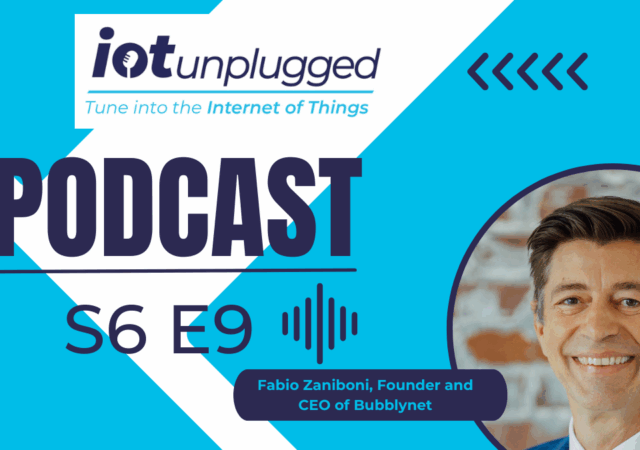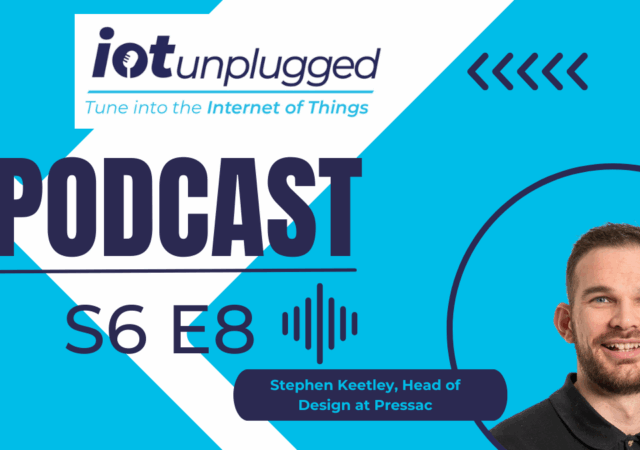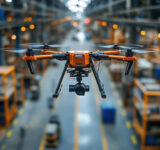The collaboration between Elliptic Labs and Ceva is part of the company’s wider strategy of identifying application partners they believe can show the value of its NeuPro architecture, said Chad Lucien, Vice President and General Manager of the Sensors and Audio Business Unit at Ceva in a conversation with IoT Insider.
Ceva’s sensor and audio business, where Lucien operates, is focused on licensing embedded software for consumer electronic companies. It also licenses its NeuPro NPU IP for semiconductor companies to design chips, like AI processors.
Ceva’s expertise with digital signal processing (DSP) was a precursor to its journey into Edge AI, Lucien explained.
“The DSP portfolio … primarily … was being used as the early entry into our Edge AI strategy,” said Lucien. “At that point in time, before we launched the NeuPro family, [we had] the SensPro DSPs, and before that, we had an architecture called the CEVA-XM and … also the CEVA-BX, which are more audio and communications focused. Those cores were used very broadly for AI applications before … Edge AI became the big hot topic.”

How Edge AI is applied to audio
One of the earliest use cases for how Edge AI could be applied to audio was voice recognition.
“Command detection … keyword detection … those are all AI models,” said Lucien. “They’re pretty lightweight. You don’t need to have a whole lot of processing, but they need to be always on, always listening. They need to … be trained on speech from many different languages, many different types of people.”
This was one early undemanding application. Another, “gaining more steam” is environmental noise cancellation (ENC), which differs from active noise cancellation (ANC).
“ANC is [where] you’re cancelling out the environment around you. So you can listen to the content on your headphones … or watch a movie.
“The environmental noise cancellation, or ENC, is typically used for voice calls. So if I’m standing … on the street corner, in a busy intersection and there’s honking horns and cars driving by, that sound is removed from the signal, and the person on the other end here is clean speech.”
Achieving this requires addressing challenges like wind noise, which can saturate the microphone, or city traffic.
Ceva launched its NeuPro-M, NPU IP for smart Edge devices and AI applications in January 2022. NeuPro-Nano, its family of Edge NPUs designed for embedded ML applications, was released in June 2024.
NeuPro-Nano is focused on low power, while the NeuPro-Nano M concentrates on large-scale AI processors running in data centres to power GenAI on the Edge.
“At that smaller, low-power end, the consumer devices … think of an earbud or a wearable, a lot of this comes down to power in [the] area,” explained Lucien. “You need to have a very small footprint. You need to be able to execute the application … with low power.”
This means, therefore, that the architecture of the NPU needs to be cognisant of the importance of low power for these small devices. Rather than being a multi-core solution – which requires a microprocessor to collect the data, perform feature extraction and run inference – Ceva’s NPU has built-in DSP which means it can extract the data and run inference on a single core.
AI is fast moving
The fast-moving and continually evolving nature of AI and standards (like TFLite) means that hardware will need to develop alongside it, but ultimately software capabilities need to adapt to enable new applications as and when they arise.
“A great example is when we designed the NeuPro-Nano … a process that we started maybe two years ago,” said Lucien. “The idea of deploying an SLM … on this class of device was not in our purview. We weren’t thinking about that at all.
“But … fast forward to the point where we’re now working with customers and deploying products. Now … that’s something that’s interesting to the market, and people are looking at, how do I deploy these SLMs?
“So having an architecture that’s flexible enough to be able to accommodate that is really important.”
Lucien noted that historically, semiconductor companies have not been software vendors, but the software-driven AI revolution has forced them to evolve their offerings and expand their software teams.
“The software landscape is very fragmented and continually evolving,” he said. “You need to have the full stack … I’m going to train a model … then I need to deploy the model. And different types of models may need a different inference framework for a different graph compiler to be able to deploy it most effectively. So having all that infrastructure support is really important, and the majority of these semiconductor companies don’t have all that infrastructure.”
Partnership with Elliptic Labs
Back to the partnership that was announced a couple of months ago: Elliptic Labs’ AI Virtual Smart Sensor Platform -a full stack AI software solution – will be run on Ceva’s NeuPro-Nano NPU to allow for optimised models on the Edge.
To paint a broader picture, this means devices like noise-cancelling earbuds, touchless smart displays, and presence-aware thermostats will be interacted with more intuitively. Other examples span gesture control for smart displays and appliances like hands-free control of an oven, and proximity detection to identify when a user is nearby and can engage with a device; like turning a display on and off depending on how close the user is.
“Our focus is on providing the NPU architecture and the tools to be able to deploy applications on that architecture,” said Lucien. Its customers want to see this architecture validated, which Ceva previously did by taking public models from the open-source community and using them as a benchmark.
“These open source models … only have so much value, oftentimes … there’s not good enough data … to really make that model viable for a true end user deployment … so the next stage is to work with the application companies whose business it is to create these models for deployment to the end customer.”
This is where Elliptic Labs comes in, although it’s not the only application partner Ceva is working with: it also counts Cyberon and AIZIP among its partners.
Elliptic Labs’ AI Virtual Smart Sensor Platform was part of the draw for Ceva, its model architecture that takes data from different sensor types and creates models for specific applications – anything from gesture detection to heartbeat monitoring.
“We wanted to initially validate that … their own AI platform would run efficiently on ours as we expected it would and then be able to … ultimately get to the point where we can show application demonstrations that are functional and useful in the real world and not just for demo’s sake.”
The roadmap for Ceva three to five years in the future is to make sure its portfolio meets the different needs of its customers – like an MCU company wanting to add AI to its products – but “the bigger part” of it is software, Lucien concluded.
“Software is where a lot of the value is being created in this market. And the more we can do and we will do to create an easier and more efficient environment for training … deploying … and optimising models for our architecture, the more successful we’ll be, and the more successful our customers will be.”
There’s plenty of other editorial on our sister site, Electronic Specifier! Or you can always join in the conversation by visiting our LinkedIn page.









